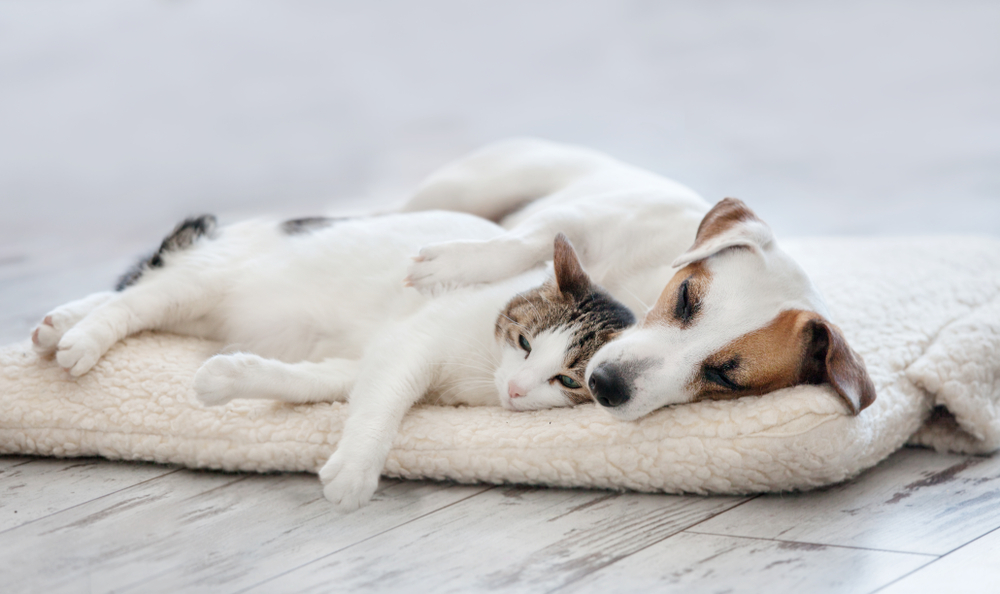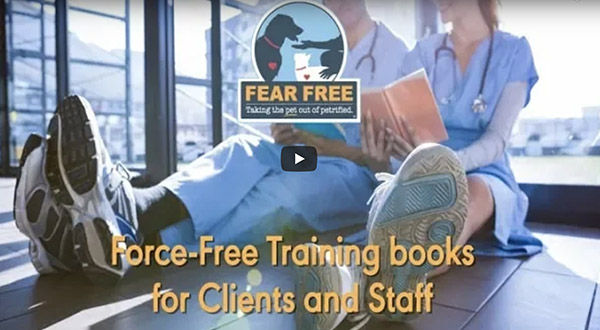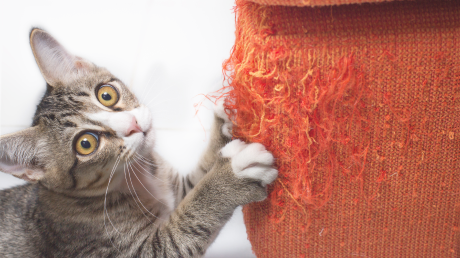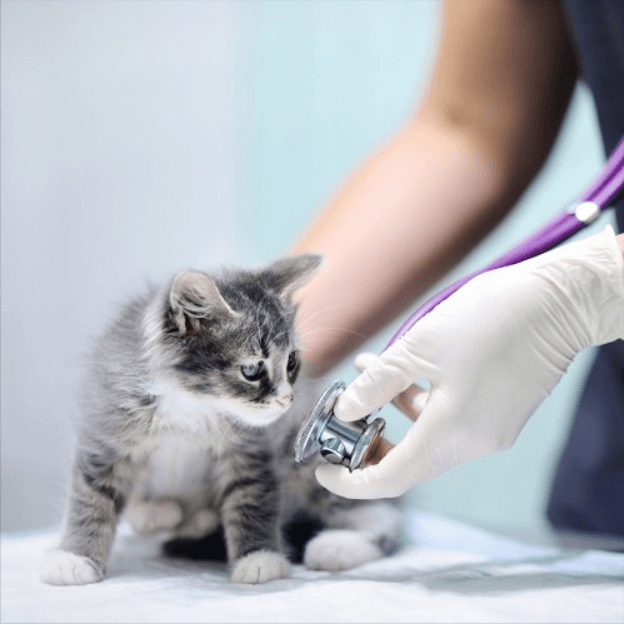By Linda Lombardi
Do clients have questions about how their cats and dogs get along – or if they can get along? Information from a recent study may help you advise them.
We use the phrase “fighting like cats and dogs” as if it’s a law of nature, but many households include both species and they get along fine – or at least tolerate one another. Still, cats and dogs have very different communication styles and social structures, so harmony isn’t a given. A recent study analyzed a survey of 748 owners mostly in the United Kingdom and the United States to see what factors contribute to having an amicable multi-species family.
What Makes a Good Relationship?
Overall, most owners reported that their pets seemed to get along well. On a scale of 1 to 10 where 1 was “can’t stand each other” and 10 was “close companions,” few ratings of 4 and below were found. Most relationships fell in the middle although there were a few “best buddy” scores of 9 or 10. Pets with the best relationships were reported to sometimes play together or groom one another, and some even shared food, toys, and beds.
The details suggest that if harmony is the goal, owners should pay special attention to the feline side of the relationship. While owners only rarely perceived their pets as seeming uncomfortable with one another, when they were, it was far more often the cat who was uneasy. Although pets were rarely reported to have injured each other, scuffles more often involved the cat threatening the dog than vice versa.
Age and Environment are Important
When researchers looked at factors found to correlate with better relationships, what was most important was the cat’s comfort level with the dog. The best relationships were those that reported a low frequency of incidents in which the cat appeared uncomfortable. Frequency of the dog’s discomfort was less crucial. Of the demographic factors, the most important was that the cat had been introduced to the dog at a young age – the dog’s age was less important.
Cats who lived indoors full time had better relationships (letting cats go outdoors is still common in the UK compared to the US). This suggests that the more time cats spend with others in the household, the more likely they are to eventually develop good relationships.
Dealing with Conflict
It’s important to note that the study was based on owner observations, not those of trained behavior experts.
“It would be a good follow-up study to see whether behaviorists’ views of how well they’re getting on match up with owners’ views,” says Zazie Todd, Ph.D., author of the website Companion Animal Psychology and the Psychology Today blog Fellow Creatures. “Some signs of stress, like avoiding being in the same room, people might be a bit more likely to miss, but we haven’t assessed that directly so we can’t be sure.”
Since people may not notice subtle signs of conflict and discomfort, dealing with the more obvious ones is important, even if they aren’t ending in bloodshed. Dogs chasing cats is sometimes seen as inevitable, so you may need to explain to clients that it is possible to train a dog not to pester a cat using positive methods.
Appropriate expectations are also important. “It does sometimes happen that a cat and a dog become good friends, but I think one of the striking things from the study is that the relationships mostly weren’t that close,” says Todd. Owners should see lack of conflict as a success, even if the pets don’t seem to be best buddies.
Along with training the dog, though, it’s important to give the cat some control. Make sure owners are providing high places and secluded spots where the dog can’t follow and feeding the cat in an area inaccessible to the dog. Try to see things from the feline point of view – what can be done to help the cat avoid conflict in the first place? Says Todd, “You have to think about helping the cat not to be stressed and to feel safe, as well as training the dog how to behave.”
This article was reviewed/edited by board-certified veterinary behaviorist Dr. Kenneth Martin and/or veterinary technician specialist in behavior Debbie Martin, LVT.









